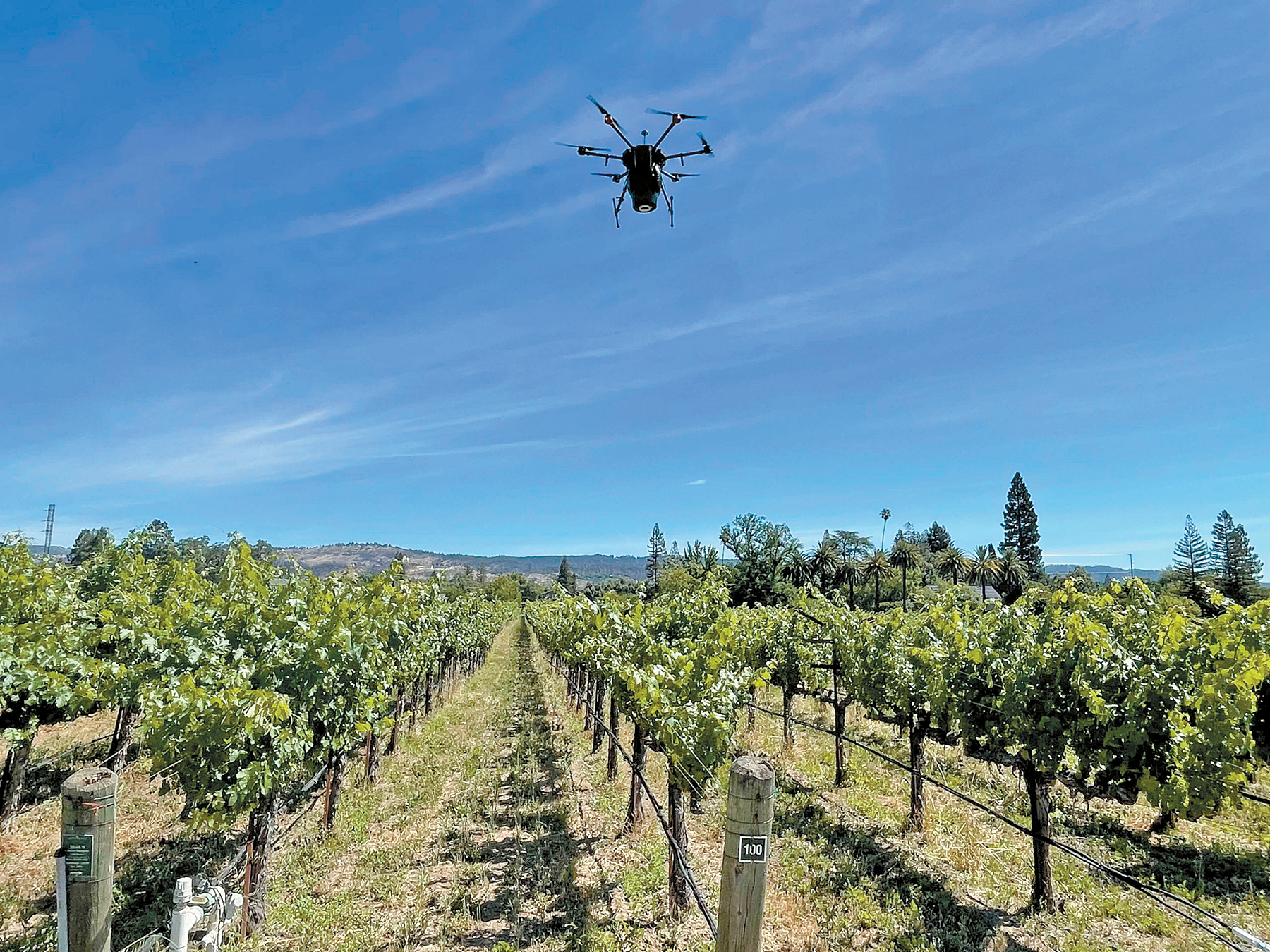Newsom signs bill easing farmers' access to drones

Photo/UAV-IQ Precision Agriculture
By Caleb Hampton
Farmers will soon face fewer obstacles in getting approved to use drones for aerial applications thanks to a bill, signed into law Saturday by Gov. Gavin Newsom, that will modernize the California Department of Pesticide’s certification process.
Growers of various commodities have touted the technology’s ability to improve worker safety, lower labor costs and boost crop yields.
However, farmers say an outdated regulatory process has made it difficult for them and their employees to get licensed to use drones to spray pesticides and biological treatments.
“The regulations that have been in place for upwards of 40 years weren’t a really great fit with the technology coming to market and how farmers wanted to use it,” said Peter Ansel, policy advocate for the California Farm Bureau, which sponsored Assembly Bill 1016.
The bill, which was introduced by Assembly Member Reggie Jones-Sawyer, D-Los Angeles, is “the brainchild of a California Farm Bureau member, who is a farmer and also an applicator,” Ansel said.
San Diego County farmer Al Stehly began looking into using drones to apply pesticides after watching his employees trek up and down the slopes of his winegrape vineyards wearing backpacks loaded with 60 pounds of chemicals.
Applying those chemicals with drones would improve worker safety and efficiency, but Stehly faced a lengthy process to obtain the necessary certifications.
To use drones for commercial aerial applications, farmers must obtain a license from the Federal Aviation Administration. Then, they need to get a special exemption to apply pesticides using drones weighing 55 pounds or more.
Those requirements alone took Stehly six months, but he wasn’t done. He also needed to get a journeyman pilot’s license.
In California, DPR rules require applicants for that license to work as an apprentice for one year under a journeyman pilot. Because there are only a handful of journeyman drone pilots in the state, that typically means apprenticing for a fixed-wing or helicopter pilot in order to be allowed to fly a drone.
“That makes little sense,” Stehly wrote in an editorial. “Drone pilots should be trained by drone pilots.”
The new law will allow DPR to reform the pesticide applicator credentialing requirements and make specific training programs for drone applications.
The bill will “add a whole (new) status” for commercial drone applicators, said Alfonso Garcia, staff member of DPR’s enforcement branch.
That status will be a designation under the unmanned aircraft pilot license.
“If you have this designation,” Garcia said, “a farmer would be able to make applications to their commodities.”
Both chambers of California’s Legislature approved the bill with unanimous bipartisan support.
“We’re hopeful that we’ll see more of the technology available to farmers,” said Ansel, the Farm Bureau policy advocate.
He added that the goal is ultimately to help farmers “grow fresh fruits and vegetables and feed the nation, and the way for farmers of all sizes to do that is going to be through the use of precision technology, whether it’s in how they use water or how they apply their pesticides.”
California Farm Bureau President Jamie Johansson applauded the signing of the bill.
“I am proud that California Farm Bureau is leading the effort to ensure that farmers have access to precision technology,” he said. “With aerial spray technology within reach of all farmers for the first time, this will help them save on crop protection costs by allowing drones to target affected areas instead of entire fields.”
With many looking to drones to play a big role in the future of agriculture, industry leaders gathered last week at the Remotely Piloted Aerial Application Systems, or RPAAS, workshop at the University of California, Davis, where they discussed the regulatory landscape and technological changes to aerial applications.
“The technology has just come leaps and bounds,” said Bryan Sanders, RPAAS committee chairman and president of HSE-UAV, a Florida-based agriculture spraying and drone sales company. “It’s literally unrecognizable.”
Sanders said farmers are using drones to “reduce water usage, solve labor challenges and apply precise and consistent treatment applications that lower operating costs” and increase yields. Some farmers use drones to drop beneficial insects over fields for added pest control.
Many farmers who purchase drones for aerial applications from HSE-UAV earn their return on investment with the first year, Sanders said.
Bill Reynolds, president of Leading Edge Aerial Technologies, said the company has seen 200% growth in its aerial application contracts over the past year.
While already useful for farmers, Reynolds said, the technology continues to improve rapidly.
“There’s numerous new features,” including better spot treatment technology, enhanced obstacle avoidance and better hovering capabilities on mountainous terrain, he said.
(Caleb Hampton is an assistant editor of Ag Alert. He may be contacted at champton@cfbf.com.)




